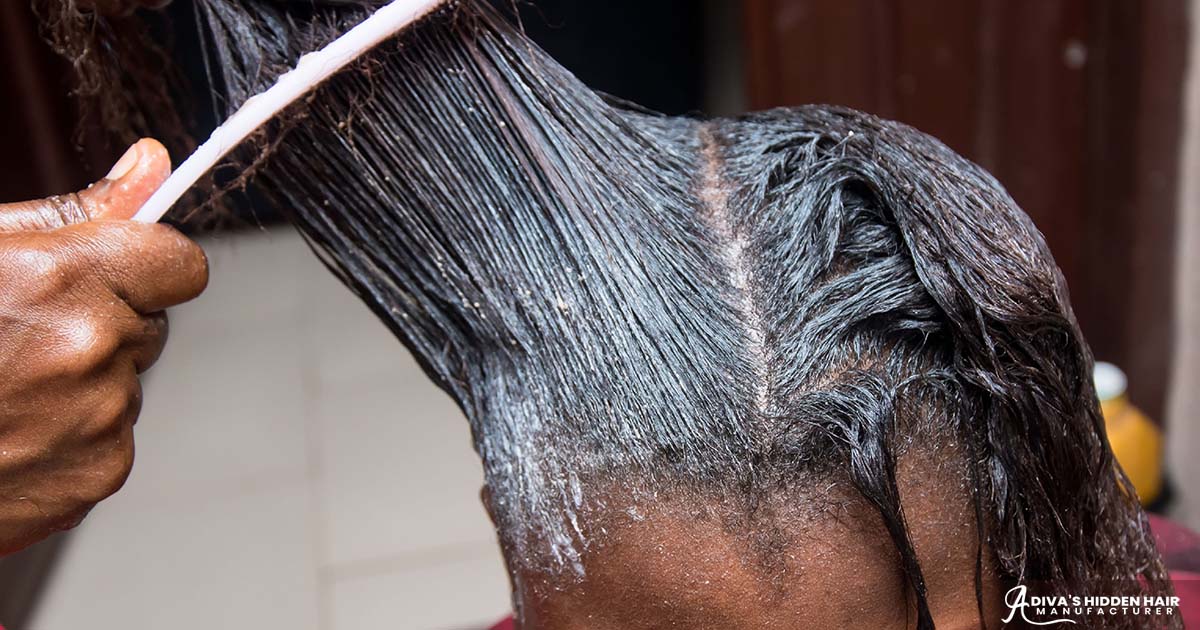
We all get excited when relaxer day is approaching. But that happy smile can get turned upside down if applying a hair relaxer turns into a fiasco. That is, at your appointment, your relaxer starts to feel very uncomfortable.
Prickly feeling on your scalp, burning sensation – not what a relaxer treatment should feel like. Getting your hair relaxed is a chemical process. Therefore, caution needs to be taken to protect the scalp before the relaxer application.
The purpose of the relaxer process is to produce straighter, smoother hair. It does its job, but at the same time, leave your hair weak and susceptible to breakage. If your scalp wasn’t prepped with a base cream, then you’ll inevitably have scalp damage.
How Do Hair Relaxers Work?
The pH agents used in hair relaxers are much higher that those used in hair dye. This is not to say that one treatment is less harmful than the other because they both contain chemicals. These agents; ammonium, sodium hydroxide, etc., penetrate deep into the hair shaft down to the cortex. That’s where they’re going to work by attacking your permanent hair bonds (disulphide) that connect your keratin molecules together. And these bonds are the same bonds that are partly responsible for your hair shape.
Given that these chemicals are strong enough the break the disulphide bonds, imagine what they can do to your health. This is why it’s so important that safety comes first when applying a hair relaxer. You must protect your sensitive scalp by applying a base cream before the relaxer treatment.
Safety First When Getting A Hair Relaxer
All relaxers denaturalize your natural hair state, thus causing dryness. The hair relaxer chemical process can leave your hair brittle as it loses its distinct elasticity. A poorly done relaxer can cause chemical burns, scalp sores, severe irritation, scarring and permanent hair loss.
‘No-Lye’ Relaxers Can Still Cause Damage
Many people falsely believe that relaxers without lye are safe. In fact, in place of lye, these relaxers contain other powerful chemicals. For example, guanidine carbonate and calcium hydroxide that effectively break the chemical bonds of the hair shaft. For this reason, ‘no-lye’ relaxers should be used with the same caution as other chemical relaxers.
How Often Should You Touch Up Relaxed Hair?
There should be enough new hair growth for the relaxer to adhere to. Additionally, you should be able to see a clear line where the relaxed hair begins and the new growth ends. Generally, this happens in about eight weeks from your last touch up or original treatment.
The phrase ‘touch up’ says it all. Applying a hair relaxer touch up does not entail applying the product all over your head. Because previously relaxed hair is already straightened, it doesn’t require additional chemical processing. In fact, doing so will most likely result in hair breakage. So, stick to applying the relaxer to the new growth hair.
You may also enjoy reading: Protecting Your Scalp Before Getting Chemical Treatments




